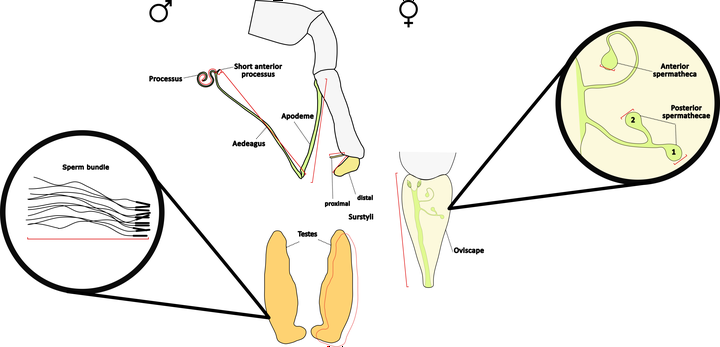Condition dependence of phenotypic integration and the evolvability of genitalic traits in a neriid fly.
 Image credit: Zac Wylde
Image credit: Zac Wylde
Abstract
The spectacular diversity of insect male genitalia, and their relative insensitivity to the environment, have long puzzled evolutionary biologists and taxonomists. We asked whether the unusual evolvability of male genitalia could be associated with low morphological integration of genitalic traits, by comparison with male somatic traits and female traits. We also asked whether this pattern was robust to variation in resource availability during development, which affects adult condition. To address these questions, we manipulated larval diet quality in a split-brood design and compared levels of integration of male and female genitalic and somatic traits in the neriid fly, Telostylinus angusticollis. We found that male genitalic traits were substantially less integrated than male somatic traits, and less integrated than female genitalic traits. Female genitalic traits were also less integrated than female somatic traits, but the difference was less pronounced than in males. However, integration of male genitalic traits was negatively condition-dependent, with high-condition males exhibiting lower trait integration than low-condition males. Finally, genitalic traits exhibited lower larval diet × family interactions than somatic traits. These results could help explain the unusually high evolvability of male genitalic traits in insects.